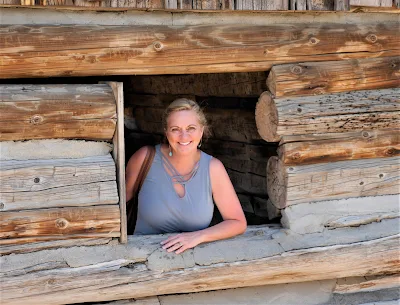 |
| The valley is located in the San Bernardino Mountains, in Southern California |
I didn’t know what that meant, unless he was mentioning how I would tucker-out after playing sports all day with my friends.
“He’s played out.”
My mother would nod her head. “He looks played out.”
Turns out, what he meant was there was no gold to be found where we had been panning.
That wasn’t the case in May of 1860, when gold was found in those same San Bernardino Mountains by William F. Holcomb and Ben Choteau – wonder why it was named Holcomb Valley later on? Perhaps Ben’s last name sounded like somewhere one would spend the weekend in the French winery in the country.
Thar’s gold in them hills!
Anyway, gold was found by these two gentlemen, and like any gold discovery secrecy was not very secret.
“You know, Holcomb found gold right beneath the surface up in the mountains,” a miner stated to another miner – I wasn’t there for this conversation.
“What about Choteau?”
“I think he’s introducing a new vintage of Chardonnay soon.”
 |
| An arrastre, where the miners ground the quartz into manageable pieces |
It should be noted, that gold was considered a precious metal during those days, not like today. No one would desire a gold necklace, earrings or bracelet during these enlightened times we now live. That would be just a waste of sparkly minerals and be so personally shallow.
Laureen, are you reading this?
Within months, the area boasted a population of 1,500 people. That doesn’t sound like a lot of folks, but it was. Considering the hardship these pioneers had to endure just to reach the mountain top from the San Bernardino valleys far below this was a lot of people.
 |
| Holcomb valley is rich in beauty, not just gold |
To get to Holcomb Valley today, we simply drive up in our comfy vehicles, turn on to a dirt road and within a short time are motoring around a beautiful serene mountain valley. Lush, with green grasses, willowy bushes, and tall proud pines.
This gold discovery occurred just a short decade after California had become a state. This new and very large piece of real estate was a titch over 2,600 miles from the capital of the United States in Washington D.C. This was really new land for exploring – all of these pioneers were a tough breed to venture so far from ‘civilized’ civilization on the east coast.
But even prior to Holcomb and Choteau, this valley, as well as the Big Bear Valley – before it was known as such, was the part-time residence of the Serrano Native American’s. They would migrate to the mountains during the late spring and summer months to get out of the heat of the below deserts or lands near modern day San Bernardino. Here they would hunt, gather food stuffs and fish in the mountain creeks. With the coming of the cold winter, they would travel off the mountain and back to the deserts below.
Then, around 1845 a posse of about twenty men, led by Benjamin Wilson – who would be the grandfather of General George S. Patton - rode into Big Bear Valley chasing a couple of outlaws, who had been raiding ranches in what would later become the city of Riverside. Not sure if they caught the desperadoes, but what they did find was the land crawling with Grizzly Bears – thus how Big Bear obtained its current name.
The hunt for bear skins was on and, unfortunately, research indicates that around 1906 the last Grizzly Bear was killed in the mountains. In October of 1916, supposedly, the last Grizzly Bear was killed in California by a farmer by the name of Cornelius B. Johnson in Los Angeles County.
Strange that the Grizzly Bear was named California’s official State Animal in 1953. Humans wiped them out – perhaps it was a way of saying, Hey, we’re sorry.
 |
| We're sorry for wiping you out - forgive us? |
With that discovery of gold, and the secret out, the valley was soon swarming with miners, shop owners, gamblers, whiskey suppliers, and all kinds of other folks who saw there were other ways of making a fortune without getting their fingernails dirty.
The town of Belleville, was born in the booming Holcomb Valley. Literally, the name was delivered by the birth of the first child in the valley named Belle. The citizens thought, in honor of this brave little girl coming into such a rough and tumble world, they would name the town after her.
 |
| Laureen looking out of the window of an early settler cabin |
Hang in there Belle!
The gold kept coming and the miners kept digging. Soon, this area was producing the most gold and wealth of any other mining area in Southern California.
But with all things golden, the time for Belleville started to decline and by 1870 most of the population had moved on for other golden opportunities. Soon, nothing was left but a valley scarred by the remnants of past mining activities amidst one or two reminders that humans once resided here.
A drive through the valley is well worth the time. There is an interpretative guide that can be picked up at the Big Bear Discovery Center in Fawnskin, which will point out some pretty interesting places in Holcomb Valley – a miner’s cabin, a slag pile from past gold diggings, an arrastre, and so many other sites to view.
 |
| John standing in the same settler cabin, looking oh so cool |
Stay cool, our friends.







